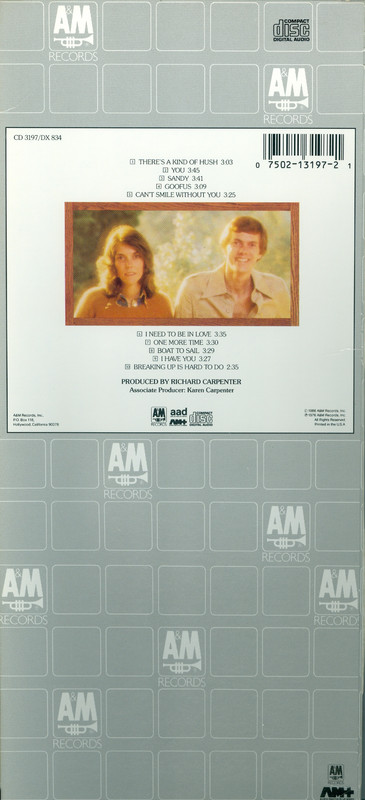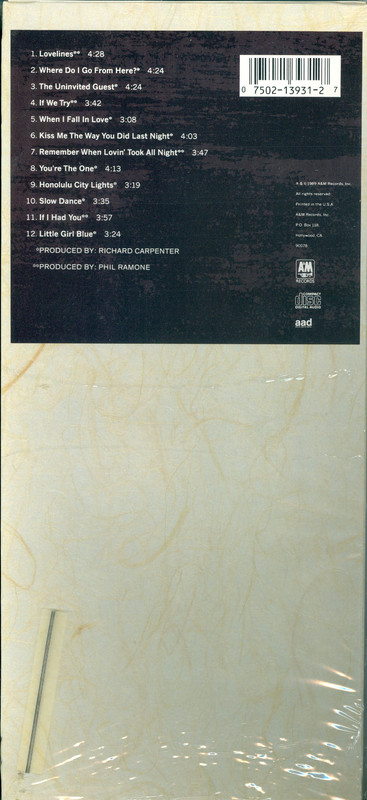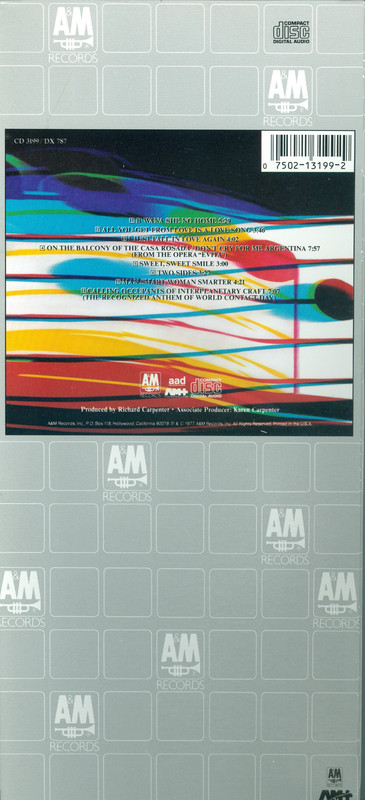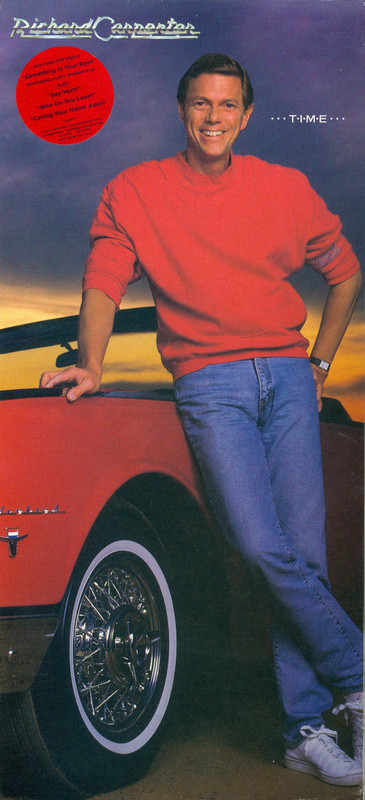Here's what I have in my box of longboxes for Carpenters. I probably had a few more initially, but over time and before scanners and color printers, those extra images came in handy for one reason or another. The MFSL only has a rear insert, and a couple of these have a price sticker or hype sticker.















